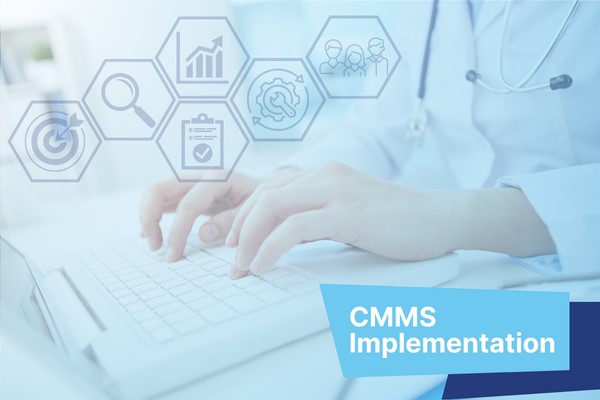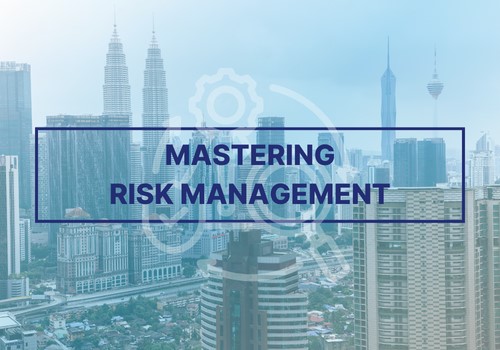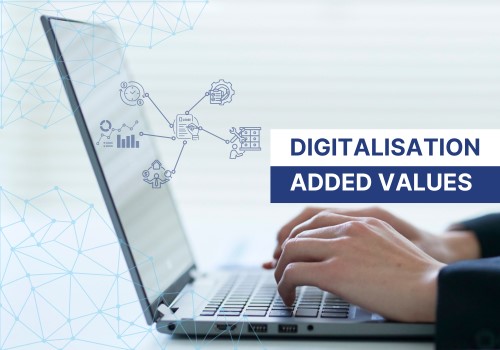CMMS Adoption in Hospitals: Implementation Roadmap for Beneficial Outcomes

Who didn’t watch at least one episode of ER or The Good Doctor, two popular TV shows picturing the hectic life of doctors, nurses, and patients in a hospital?
Remember the chaotic situations when the sudden arrival of multiple ambulances created havoc in the ER, or a long and very difficult surgery was being disrupted by the sudden loss of power or the sudden tremor of an earthquake?

Even worse, what happened, globally, to healthcare institutions during a pandemic that has brought over a “New Normal” made of movement control, remote working, detachment from routine physical inspections, controls, and maintenance?
Hospitals are, possibly, the most complicated ecosystems where people and equipment need to interact in a very precise and uninterrupted manner and where the unexpected becomes reality at every moment. To make things even more dramatic, let’s keep in mind that hospitals are where people are born, cured, and unfortunately die. Mistakes or delays are not allowed, incidents shouldn’t happen, and when they do happen must be resolved in a matter of seconds as lives are at stake.
We do not want to make any dramatic opening here but make sure we set the stage right, to understand the strategic and vital role that a Computerised Maintenance Management system (CMMS) has within a healthcare facility.
When timing, precision and efficiency are paramount, integrating cutting-edge technologies becomes not just a strategic choice but a fundamental necessity considering how, their role, has become increasingly crucial. CMMS, besides being an easily adaptive software, helps enormously in streamlining operations, cost-effectiveness, and, most importantly, enhancing patient outcomes and experience.
In this blog post, we will list the top 5 best practices for implementing CMMS in the healthcare industry first, and then we will highlight the major benefits resulting from a proper CMMS implementation.
Roadmap for CMMS Adoption in Healthcare
Before talking about a CMMS adoption roadmap, it's essential to understand the foundational principles of CMMS. At its core, CMMS is a sophisticated, but easy to use, software system structured and developed, within many other possible applications, to organise, streamline, and optimise the maintenance and management processes of hospitals, besides a long list of other building types, diverse assets, and equipment.

From medical equipment to physical infrastructures, CMMS acts as a centralised platform that empowers healthcare facility managers to proactively handle maintenance, reduce downtime, and ensure regulatory compliance.
Define Goals and Objectives
Before implementing a CMMS, it is crucial to define the why it is implemented, in other words define the expectations. This will help to determine the key features and functionalities that are needed in the CMMS that will be chosen. For instance, if the objective is to improve equipment up-time, the CMMS to look for is the one offering preventive maintenance scheduling, asset tracking and real-time monitoring of equipment performance. Similarly, if the goal is to comply with regulatory requirements, the needed CMMS is the one offering compliance management features.
Involve All Stakeholders
Implementing a CMMS requires collaboration and coordination among different departments and stakeholders. All stakeholders in the hospital need to get involved in the implementation process, including maintenance technicians, clinical staff, IT, and management teams.

This will ensure that everyone understands the benefits of the CMMS and is committed to its success. Moreover, involving all stakeholders will help identifying potential issues and roadblocks at early stage of implementation and develop strategies to overcome them.
Data Migration and Integration
These are two critical components of a successful CMMS adoption and implementation. Ahead of the CMMS onboarding process the data that needs to be migrated from the existing systems, such as spreadsheets, databases or legacy systems should be clearly identified and prepared. It is paramount to ensure that the selected CMMS allows integration with other systems, such as Electronic Health Records (EHRs), Facility Management Systems (FMSs), and more. This will enable a real centralised view of all data, reducing data duplication and streamlining workflows.
Customise the CMMS to Meet Your Needs, Till Certain Extent.
Every healthcare organisation has unique requirements and workflows. Therefore, it is essential to plan possible customisation of the selected CMMS to meet the specific needs. However, it is a best practice to evaluate what is already available in the CMMS in terms of major features and workflows, limiting the tailoring as much as possible to reports, dashboards, and setting up notifications and alerts. This will help maximise the benefits of the CMMS, improve your operational efficiency, while not compromising the efficiency of the chosen CMMS.
This will ensure that everyone understands the benefits of the CMMS and is committed to its success. Moreover, involving all stakeholders will help identifying potential issues and roadblocks at early stage of implementation and develop strategies to overcome them.
Provide Adequate Training and Support.
Training and support are crucial for the successful adoption and use of a CMMS. The hospital staff should receive adequate training on how to use the CMMS, including data entry, work order management and reporting.

Moreover, ongoing support shall be always provided to address any issues or questions that may arise after the implementation. This will help ensuring an effective and efficient use of the CMMS leading to improved outcomes and reduced costs.
In conclusion, implementing a CMMS in the healthcare industry requires careful planning and to maximise the benefits and improve operational efficiency. With the right CMMS in place, healthcare organisations can improve patient care, reduce costs, and stay compliant with all regulatory requirements.
The Benefits of CMMS Adoption in Healthcare
Let’s now explore the major benefits deriving from CMMS implementation in hospitals through the understanding of all the layers of transformation that this technology brings to the healthcare ecosystem. From increasing operational efficiency to ensuring regulatory compliance and empowering data-driven decision-making, CMMS must be looked at not just as a tool but as a catalyst for positive change.
As hospitals strive to navigate the challenges of healthcare, the adoption of CMMS stands as a decisive step towards a future where precision, efficiency, and patient-centric care converge seamlessly.
Enhancing Operational Efficiency: A Paradigm Shift
In an environment where every minute is precious, and every resource is critical, operational efficiency stands as the best way towards excellence. CMMS implementation emerges as a transformative element leading the way towards a paradigm shift in how hospitals approach asset management.

CMMS empowers maintenance teams with real-time data and insights, facilitating predictive maintenance strategies that address possible threats before they evolve into costly and life-threatening disruptions. This proactive approach not only minimises downtime but also extends the lifespan of vital medical equipment, ensuring that hospitals can consistently deliver uncompromised quality of their healthcare services.
Cost-Effective Asset Management: Navigating Budgetary Constraints
In an era marked by budget constraints, above all for public healthcare, and the perpetual challenge of optimising resource allocation, hospitals are seeking sustainable solutions that safeguard both their financial health and the quality of patient care provided.
CMMS adoption, by providing a comprehensive framework for managing assets and resources efficiently, is the best choice towards healthcare excellence at reasonable costs. By enabling hospitals to prioritize and schedule maintenance activities pre-emptively, CMMS minimises the risk of costly disruptions causing unbudgeted cost, allows resource optimisation, and, in the long run, significantly reduces operational costs.
Non-Negotiable Regulatory Compliance and Patient Wellness and Safety
Hospitals operate within a heavy framework of regulations and policies, where compliance is non-negotiable and patient safety is paramount. CMMS serves as a strategic compliance partner tracking, documenting, and reporting maintenance activities to ensure that healthcare facilities adhere to stringent regulatory standards.

By enabling a transparent and traceable maintenance trail, CMMS not only stands all regulatory scrutiny but, more importantly, contributes to achieve a safe and secure environment for patients and healthcare professionals.
Data-Driven Healthcare Made Real
Data, today’s precious commodity, are at the core of a CMMS and generate the power of real-time information to enable hospitals towards data-driven decision-making processes.

By centralizing data related to asset performance, maintenance history, and resource utilisation, CMMS provides hospital administrators invaluable insights. Informed decision-making allows healthcare facilities to allocate resources effectively, plan for future investments, and continually enhance operational strategies.
Liberating Healthcare from the Burden of Manually Managing Facilities and Equipment
Beyond easing technological advancement and increasing the efficiency of hospitals, CMMS acts as the administrative tasks repository. By automating routine maintenance schedules, tracking inventory levels, and facilitating seamless communication among departments, CMMS allows healthcare professionals to redirect their focus towards what truly matters – delivering high-quality and compassionate patient care.
Conclusion and Food for Thoughts
Health is priceless and healthcare professionals should be able to focus on delivering the best possible services instead of running after failing equipment or unscheduled maintenance. When looking at investment within a reduced budget a critical aspect should always be looked at is not the “cost-of-doing-it” but its exact contrary, or “the-cost-of-NOT-doing-it”!
ServeDeck is proud to have been able to serve several healthcare institutions and is ready and willing to serve even more. Our fully integrated all-in-one solution goes beyond a mere CMMS as ServeDeck offers it within a full range integrated facility management solution which comprises CMMS but also housekeeping and security management, as well as vendors management, procurement, leasing & tenants management, and much more. Additionally, as securing all data within the system is paramount, above all in healthcare, we are ISO-27001 certified; your data with us are secured!
Reach out to our team for a practical demo to explore how ServeDeck can become your healthcare facility management digital assistant by dropping an email to marketing@servedeck.com. The solution to your digitalisation adoption is only one email away!
ABOUT THE AUTHOR
The .jpeg) opinions expressed in this article are solely of the author, Dr Daniele Gambero.
opinions expressed in this article are solely of the author, Dr Daniele Gambero.
Dr Gambero has been an expatriate to Malaysia from Italy, since 1998 and has more than 35 years of real estate experience. He is the co-founder and group CEO of REI Group of Companies, the Co-founder of Propenomy.com and the president of the Malaysia Proptech Association.
In the past 10 years Daniele, as international and TEDX speaker, has engaged several hundreds thousand people talking about Property, Economy, Propenomy, Digital Marketing and Motivation. He is also a bestselling author and columnist on several magazines and main stream media. You can reach him directly through his LinkedIn page here.
SHARE THIS POST:
Comments (0)
Leave a Reply
Your email address will not be published. Required fields are marked *







